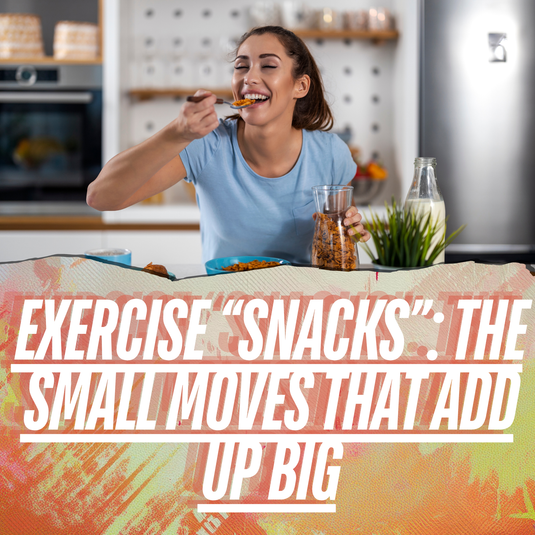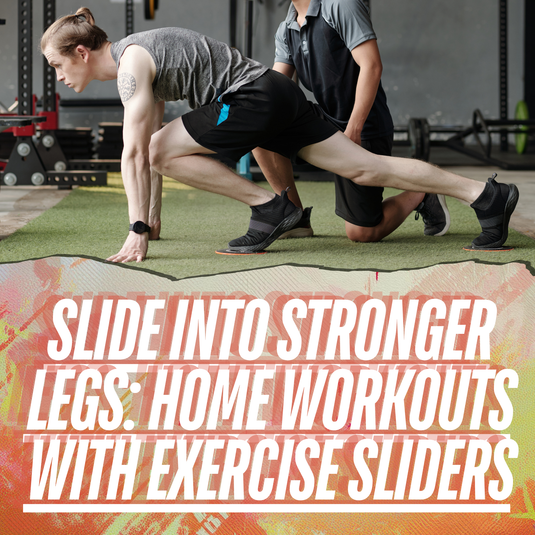Periodization Training for Strength Gains

⏱️ Estimated Read Time: 6 minutes
🧠 TL;DR
- Periodization Training for Strength Gains offers effective, accessible movements for targeted results.
- This guide is designed to help you move smarter, build strength, and stay consistent.
✍️ Summary
This post explores periodization training for strength gains in a way that’s actionable and easy to follow. Whether you're new to this style of training or leveling up, it includes practical takeaways for your routine.
📚 Table of Contents
There is an old saying that goes something like, "Variety is the spice of life." In many ways, this saying is 100% accurate for most life items. Much of our everyday life is made better by adding variety to it. For example:
- A variety of spices to choose from in food makes our palettes more mature and allows foods to have more uses.
- A wide array of music to play daily to meet our moods helps manage stress.
- Variety television shows have entertained millions of viewers for years with an unknowable combination of music, comedy, and talent week to week.
Variety can bring a lot of joy to many parts of our lives; however, there is one place where variety can work against us, and that is in our workout programs.
Workout programs lasting anywhere from 4 weeks to 52 weeks should follow some sort of periodization training model. A program with too much variety can physiologically stunt progress, increase the risk of overtraining, and cause burnout. In this article, we will cover what a periodization model is, the types of periodization models, why periodization models are superior to randomized training, and how you can use periodization training to chase your fitness goals.
What is a Periodization Model?

NSCA defines periodization as "a logical, systematic process of sequencing and integrating training interventions to achieve peak performance at appropriate time points." This systematic approach should reassure you of its effectiveness.
Periodization is about adjusting variables such as volume, intensity, and load in gym movements to match a specific adaptation in the human body. These smaller, progressive stages are ways for individuals to train toward one particular physiological goal. If your goal is to be physically fit, training should be specific to these goals. This focus on specific goals should motivate and guide your training.
Periodization allows for periods focused on specific adaptations associated with these qualities. For example, suppose a client's goal is to get stronger. In that case, training should reflect sets, reps, time, and exercises that scientific evidence supports as those that will create the desired changes and adaptations in the body. This principle is known as the SAID principle (Specific Adaptations to Imposed Demands). The SAID principle states that the human body adapts specifically to the demands placed on it. It's not enough to do something once to get the body to adjust. It must be done with frequency, regularity, and intensity to create the desired change. Periodization allows us to assign particular periods to chase these adaptations.
Why Do We Need Specific Periods to Chase Adaptations?

Evidence suggests that when an individual starts a new periodization workout program, the first changes are always neurological. For instance, if the goal is increasing lower body strength, the program begins with back squats; the first physical internal adjustments to those back squats will be at the nervous system, building direct pathways to the quadriceps, glutes, and hamstrings. Those adaptations take anywhere from 3-6 weeks, depending on many variables, such as the novelness of the exercise and the training age of the individual involved.
Types of Periodization Models: Linear and Undulating
There are two main types of periodization models that all programming falls under: linear and undulating periodization. Each periodization exercise program can be tailored to fit the specific needs of the individual, making it an essential part of any structured workout calendar.
Linear Periodization is characterized by a gradual increase in training intensity, which decreases the volume, with changes occurring every 4-6 weeks. Linear periodization models chase specific adaptations during specific time frames, as mentioned above, such as periods to focus on power, strength, endurance, and hypertrophy (muscle gain). This approach often involves planning mesocycles, which are specific phases of training within the overall periodization plan. Linear periodization is a common practice that aligns with most athletic seasons, allowing athletes to focus on lower volume, higher intensity exercises during the season and placing higher volume periods during the offseason when an athlete is the freshest. Linear periodization also works to allow individuals and athletes alike to peak for competitive seasons, making it an integral part of a strength training workout plan.
Undulating periodization, while still allowing for focusing on specific goals, allows for more frequent changes in the same phase, allowing for greater frequency in fluctuations daily, weekly, or biweekly. These fluctuations cause greater stress on the nervous system, forcing more significant change more quickly. For instance, a 'training zone' could be a week where the focus is on strength, followed by a week of endurance training. These 'training zones' allow for greater perceived variety and work with athletes and individuals who do not have consistent schedules associated with their training. This flexibility can be particularly beneficial in a full body workout routine, providing a dynamic approach to achieving fitness goals.
How to Incorporate Periodization into Your Strength Training Workout Plan

Integrating periodization into your strength training workout plan can significantly enhance your results. I know what you are thinking.
"Jesse, I am not an athlete. I just want to work out to feel better, look better, and be healthier."
I get it.
You are not a strength coach like me, with a decade of experience and a deep understanding of physiological changes and adaptations. You don't have the first clue where to start when it comes to putting together a periodization workout program that uses periodization techniques. That doesn't mean I cannot give you a rudimentary way of outlining a program for yourself.
Let's Start with a Goal
Goal #1: "I want to get a stronger upper body."
- Step 1: Assess where your upper body strength is at. Whether you want to use pushups, a bench press test, pull up test or strict overhead press, figure out where your strength is currently. To look at strength we typically use 1RM or 3RM but you can also use a 10RM. RM means "Rep Max" so a 1RepMax or 3 Rep Max or 10RepMax. If you only have bodyweight, figure out how many strict reps of something you can do to failure and write it down.
- Step 2: Figure out how long you want to take to get stronger at "X" For example, I want to spend the next three months increasing my 10RM dumbbell overhead press.
- Step 3: Break down that period into four-week cycles, also known as mesocycles.
- Step 4: Assign different sets, reps and intensity to each cycle. If breaking it down to 12 weeks, then there will be three cycles.
- Cycle 1: Maybe you are completing three sets of the exercise three times a week, eight reps per set. What weight do you choose? Easy, whatever weight you can only do that exercise eight times of. Maybe that weight changes week to week. The only way to know is to track it.
- Cycle 2: pick a weight you can only do five reps of for three sets, three times a week, and complete that.
- Cycle 3: choose a weight you can only complete 2 times and do that for four sets, three times a week for four weeks.
- Step 5: Reassess the movement(s) you used to assess your strength and see your progress. If it's where you want it to be, maintain it with a volume of at least two days a week. If there isn't, assign more time to it.
Voila, You Just Added Periodization to Your Training
- Specific goal setting
- Assessment
- Plan (Time Frame, Cycles, Sets and Reps)
- Train
- Reassess
The exact process occurs with endurance training, tweaking assessments to be time- or distance-based.
What Are the Results?

You will be trained to look better, feel better, and move better with a systematic goal in mind, and you will get healthier in the process. You will have something to show for it by achieving your goal.
So, the next time you are looking at a workout program, wishing it had a different workout every day, realize that if you are looking to train to improve long term, then monotony, whether it's month to month or week to week, is the best way to achieve long-lasting, safe and effective results. Our programs at Living Fit are built with the specific intent to create an outcome at the end of the program. The four-week cycle of five workouts, for four weeks, allows you, the client, to see progress week to week, learn the skills associated with the workouts, and send a strong enough signal to the body to adapt and change.
Constantly changing the exercises every week doesn't facilitate an environment for growth, instead delaying the progress you could achieve. Periodization is an essential component of resistance training. That is not our opinion. It's a scientific fact. So try to see your workouts through the lens of progress week to week, month to month, year to year. The only way to do that is to adhere to a training regimen to see constant progression, avoid plateaus in training, and reduce the occurrence and severity of injuries. Variety can be good in a lot of parts of our lives. Our training should be less focused on variety and more focused on progression.
Helpful Resources:
- Be alerted when we publish more like this to our blog here
- Download our app here
- Daily workout plans here
- Fitness Equipment like barbells and bumper plates here
- Free bodyweight workouts here
- Follow along with $1 video workouts here
Want more guidance? Check out our Weekly Dumbbell Workout #1.
📝 FAQs
How often should I do these exercises? +
2–3 times per week is a good starting point for most people.
Do I need equipment? +
Many of these can be done with just your bodyweight or a single kettlebell or dumbbell.
Can beginners do these routines? +
Yes! These movements are designed to scale with your fitness level.










